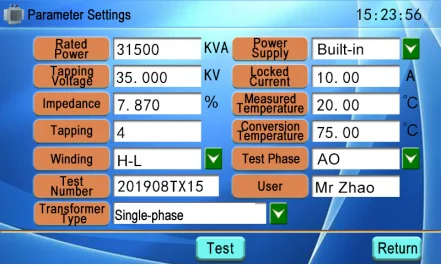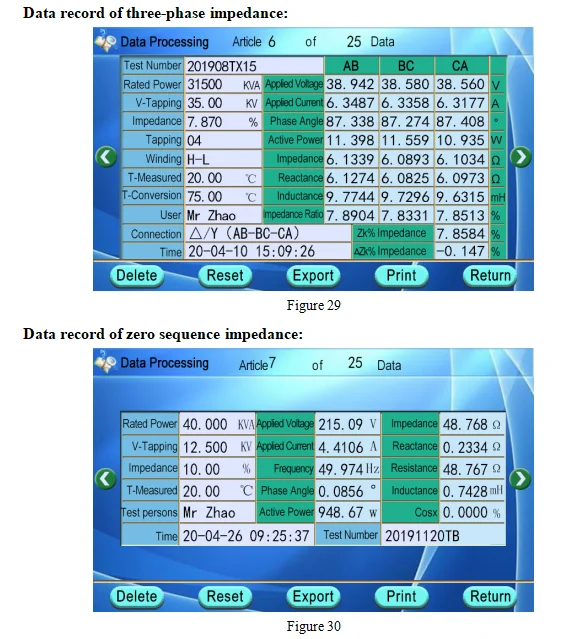Xtester-ZW860 Power transformer winding resistance low voltage LV short circuit impedance tester
Overview
Short circuit impedance is an important parameter of transformers. Short circuit impedance method is a traditional method to judge the winding deformation based on GB1094.5-2008 and IEC60076-5:2006. The variation of short circuit reactance is the only criterion to judge whether the transformer windings are deformed or not. Measuring the winding parameters of transformers is an efficient means of testing the manufacturing process level of a transformer and judging whether the transport process has adverse effects on the transformer windings or not. The short circuit impedance test is the most direct method to identify the impact of short circuit current on the transformer in operation or to check whether the windings are deformed or not after the transformer is struck by mechanical force during transportation and installation. It is of great significance to judge whether the transformer can be put into operation and one of the bases to judge whether it is required for the transformer to be subject to strip inspection. |
Performance characteristics
1. AC 220V low-voltage power supply is adopted for the tester which applies current to AB, BC and CA windings of single-phase and three-phase transformers in manual and automatic modes. The tester can measure not only the percentage error of the transformer’s short circuit impedance when compared with the nameplate impedance, but also the transformer’s impedance, reactance resistance and inductance, which is convenient for users to compare data with intuitive test results. 2. Both single-phase test and three-phase test can be conducted by the tester; Both manual testing and automatic testing are allowed. 3. The three-phase test can be completed automatically without reversed test lines due to its one-time wiring; 4. Items to be tested can be measured without an external voltage regulator; 5. The tester can display not only the percentage error of impedance but also the applied voltage, applied current, measured power, short circuit impedance, inductive impedance of short circuit, winding inductance, voltage of short circuit impedance and so on; 6. Zero-sequence impedance is suitable for transformers with neutral points in star wiring on the high-voltage side. Zero-sequence impedance, inductive zero-sequence impedance, resistance of zero sequence and inductance of zero sequence can be measured simultaneously by the tester. 7. Internal power supply and external power supply can be adopted for the tester; 8. A 7-inch color touch LCD screen is internally installed in the tester with an operation menu in Chinese for more convenient touch operation. Meanwhile, the tester is equipped with a mini-printer for real-time data printing; 9. The tester is provided with a RS232 interface and the test data can be transferred to the backend; 10. 100 test records can be stored in the tester with the test storage time as the index for data storage; 11. The tester is provided with a USB interface and the test data can be transferred to a USB flash disk; 12. The tester has the function of clocking and the time can be calibrated automatically; |
Technical indicators
1. Voltage measurement range: 15V-500V 2. Current measurement range: 0.5A-50A 3. Accuracy Voltage error: <0.2%; Current error: <0.2%; Power error: ≤±0.5%(CosΦ>0.1); ≤ ±1.0%(0.05<CosΦ<0.1); Short circuit impedance error: ≤ ±0.5%(CosΦ>0.1); ≤ ±1.0%(0.05<CosΦ<0.1); 4. Impedance measurement range: 1Ω-200Ω; 5. Working power supply: AC220V ± 10%; 6. Supply frequency: 50Hz ± 5Hz; 7. Operating temperature: -10 ~ 40℃; 8. Ambient humidity: ≤80%RH, without condensation; 9. Altitude: ≤1000meters; 10.Dimensions: 400*340*195mm; 11. Total weight: 10kg. |
























































































































































































 English
English






